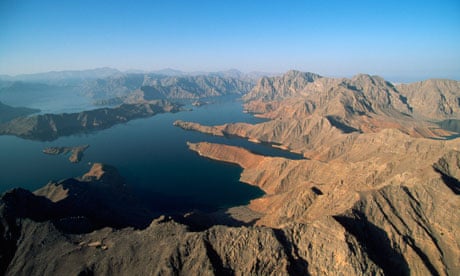On one side of the water there's Iran, and on the other side a collection of Arab states: Iraq, Kuwait, Saudi Arabia, Bahrain, Oman and the United Arab Emirates.
The ancient geographers Strabo and Ptolemy called this stretch of water the Persian Gulf – a name that has persisted into modern times.
Starting in the 1960s, though – and linked to the rise of nationalism – states on the Arab side began calling it the "Arabian Gulf" (al-Khaleej al-Arabi in Arabic).
This presents a dilemma for journalists writing about the region. To avoid taking sides in the dispute, my personal preference is to simply call it "the Gulf", on the assumption that readers will know from the context that I'm not talking about the Gulf of Mexico.
Before anyone asks, I might point out that I take a similar view of the water separating England and France which is officially known on one side as the English Channel and on the other as La Manche. Insisting on the "English" bit seems unnecessarily provocative to me, and for the sake of keeping our entente with France cordiale, I think it's better just to talk about "the Channel".
But sitting on the fence doesn't impress the Iranians when it comes to the Persian/Arabian Gulf. They are so touchy about it that in 2006 copies of the Economist were banned from Iran when the magazine dropped the "Persian" epithet from "Gulf". There were also diplomatic protests when the Louvre in Paris omitted "Persian" from mentions of the Gulf in its guides.
At an official level, the UN and various other international bodies recognise "Persian Gulf" as the established and recommended name – presumably based on historical usage. That is also the official position of the US. Or rather, it was until last week.
On 20 October, at a press briefing on arms sales to Saudi Arabia, Andrew Shapiro, an assistant secretary at the state department, referred to "the Arabian Gulf and broader Middle East".
On its own, this might be brushed off as a slip of the tongue, though Shapiro does seem to have been referring to a prepared statement. And since the phrase "broader Middle East" clearly includes the contentious stretch of water, why was it necessary to mention the Gulf (Persian or otherwise) at all?
Almost immediately, Shapiro's use of "Arabian Gulf" stirred the National Iranian American Council into action, and in protest they organised a letter-writing campaign to the secretary of state, Hillary Clinton. Their policy director, Jamal Abdi, also wrote an article about it for the Huffington Post, which appeared on Monday.
It's difficult to imagine, therefore, that when Kurt Campbell – another assistant secretary at the state department – stepped into another press briefing on Tuesday he was totally unaware of the "Arabian Gulf" rumpus. But he then used the phrase himself, referring to "piracy issues in the Arabian Gulf".
This is too much of a coincidence to be accidental; it suggests a change of policy. "Persian Gulf" has been the official American term since 1917 and in the absence of any explanation from the state department we can only speculate about why it has suddenly become Arabian. There's no logical reason for it, except as a rather petty gesture calculated to annoy Iran.
